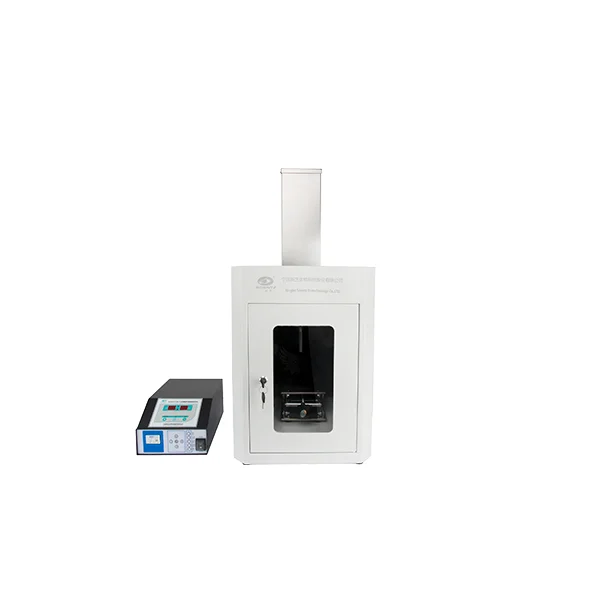With the continuous development of industrial technology, ultrasonic technology, as a green, efficient and non-contact means of energy transfer, plays an increasingly important role in many industrial fields. As one of the core components of this technology, the application scope of industrial sonicators is also expanding. It not only improves the efficiency and precision of traditional processes, but also promotes technological innovation in emerging industries. This article will focus on the five major fields of cosmetics, bioengineering, materials engineering, chemical engineering and environmental engineering to deeply analyze the main applications and technical value of industrial sonicators.
1. Cosmetics industry: Refining and homogenization of cosmetic particles
In the cosmetics industry, the texture, stability and absorption effect of the product often depend on the particle size distribution and uniformity of its internal particles. Industrial sonicators can break up and refine particles in a short time and achieve homogeneous distribution through ultrasonic cavitation effect.
Preparation of nanoemulsions
Many high-end skin care products need to encapsulate active ingredients in nanoemulsions to ensure their stability and transdermal absorption effect. Ultrasonic generators can quickly emulsify the oil phase and the water phase to avoid the heat accumulation and inefficiency caused by traditional stirring methods.
Powder homogenization and dispersion
Some cosmetics such as foundation liquid and BB cream contain fine powders. Ultrasonic dispersion treatment can effectively prevent powder agglomeration and improve the uniformity of product application and skin comfort.
Active ingredient encapsulation
When preparing microcapsules of ingredients such as vitamins and hyaluronic acid, the high-energy vibration of ultrasound helps the rapid fusion of ingredients and packaging materials, improving the stability and release control ability of ingredients.

2. Bioengineering: Efficient extraction of natural ingredients
Ultrasonic extraction technology, as an environmentally friendly and efficient extraction method, has been widely used in the field of bioengineering, especially in the extraction of natural active substances such as essential oils, polysaccharides, and flavonoids.
Essential oil extraction
The traditional steam distillation method has the problems of long extraction cycle and high energy consumption, while ultrasonic assisted extraction can destroy the plant cell wall at a lower temperature, allowing the essential oil to be released quickly, while keeping its natural active ingredients from being destroyed by high temperature.
Polysaccharide and flavonoid extraction
These ingredients are often present in the plant cell wall. The physical wall breaking function of ultrasound can improve the leaching rate and extraction purity of the active ingredients, reduce the amount of solvent, and shorten the extraction time.
Natural pigment extraction
In the extraction process of natural pigments such as anthocyanins and chlorophyll, ultrasonic treatment can significantly improve the extraction efficiency and reduce the pigment degradation caused by heating.
3. Material Engineering: Particle Size Control and Homogenous Dispersion of Advanced Materials
In materials science, especially in the field of nanotechnology, ultrasonic generator is a key material preparation tool, and its core role is mainly reflected in material dispersion, particle size control and triggering of high-energy mixing reactions.
Nanomaterial dispersion
Nanoparticles are very easy to agglomerate due to their large surface area, which affects their performance in functional materials, coatings and conductive slurries. Through ultrasonic high-frequency oscillation, nanoparticles can be quickly dispersed to obtain a stable suspension system.
Preparation of non-ferrous metal powders
When preparing ultrafine particles of non-ferrous metals such as copper, silver and aluminum, ultrasound can effectively improve the mixing uniformity of liquid phase reduction reactions, thereby controlling particle size distribution and crystal morphology.
Rare earth material processing
In the active purification and synthesis of rare earth elements, ultrasound can be used to assist extraction, solvent purification and reaction homogenization, significantly improving the purity and reaction efficiency of the product.
4. Chemical Industry: Improving the Efficiency of Traditional Processes
In traditional chemical processes, many processes have problems such as insufficient mixing, incomplete reaction, and high time cost. Industrial sonicators have injected new impetus into the chemical industry with their unique physical energy conversion method.
Ultrasonic gel liquefaction
Some polymer colloids are prone to form a gel state during storage and are difficult to reuse. Ultrasonic waves can destroy the gel structure through cavitation shear effect, restore its fluidity, and greatly improve the utilization rate of materials.
Resin defoaming
Foaming problems are often encountered during resin stirring or synthesis in chemical production. The use of ultrasonic waves can quickly destroy the bubble interface without adding defoaming agents, achieving the effect of rapid defoaming.
Polymerization reaction activation
In some monomer polymerization reactions, the high-frequency oscillation of ultrasonic waves can promote molecular movement, accelerate the polymerization rate, and improve the uniformity of the molecular weight distribution of polymers.
5. Environmental Engineering: Assisting Environmental Protection and Green Manufacturing
Faced with increasingly severe environmental pressures, industrial sonicators have shown broad application prospects in sewage treatment, waste degradation, and resource recovery.
Degradation of pollutants in sewage
The ultrasonic cavitation effect can produce a large amount of •OH (hydroxyl radicals). These active particles have extremely strong oxidizing ability and can effectively degrade difficult-to-degrade organic matter, such as dyes, pesticide residues, and pharmaceutical waste liquids, thereby improving the purification efficiency of water treatment.
Assisted sedimentation of heavy metal ions
Ultrasonic waves can destroy the structure of heavy metals and organic complexes in water, promote their reaction with flocculants, thereby accelerating the precipitation process and improving the removal rate.
Resource treatment of waste liquid
In some valuable waste liquids, such as electroplating wastewater containing precious metals such as copper, nickel, and silver, ultrasonic-assisted extraction and precipitation technology can maximize resource recovery and reduce pollutant discharge.
As an indispensable part of modern industrial technology, industrial sonicators have gradually penetrated from the initial cleaning field to many high-tech industries such as cosmetics, bioengineering, materials engineering, chemical engineering, and environmental engineering. With its advantages of high energy efficiency, green environmental protection, and strong adaptability, it is constantly expanding its application boundaries.
As a professional industrial sonicators supplier, we are committed to providing efficient, stable and customized ultrasonic solutions for multiple industries such as cosmetics, bioengineering, materials engineering, chemical engineering and environmental engineering. With advanced technology platforms and rich industry experience, we not only provide multi-frequency and multi-power models, but also tailor-make control systems and sound field structures according to customer process requirements to ensure that ultrasonic energy acts accurately on the target medium, greatly improve production efficiency and product quality, and provide strong support for enterprises to achieve green, efficient and intelligent manufacturing.
www.dscientz.com
Ningbo Scientz Biotechnology Co., Ltd.

Average Rating